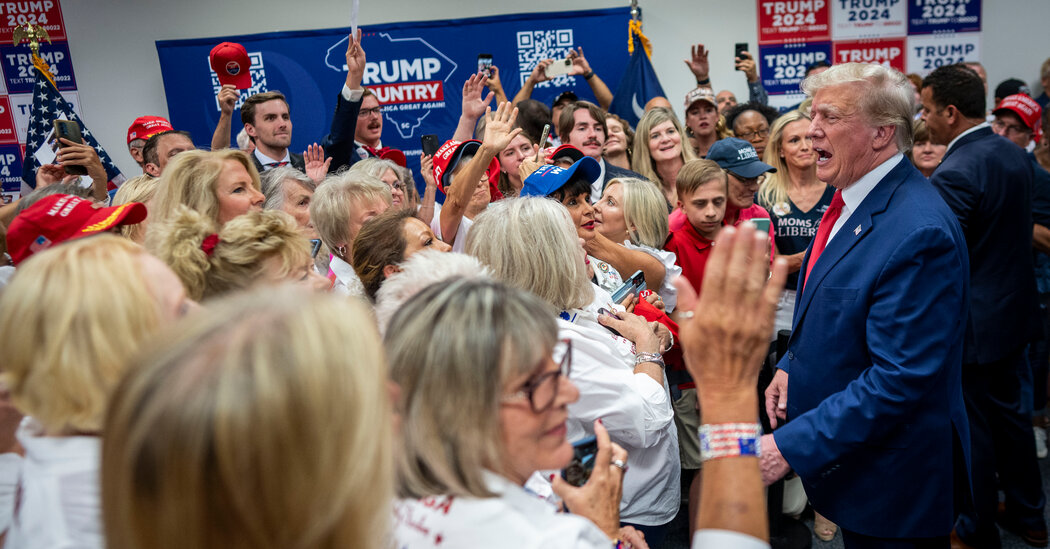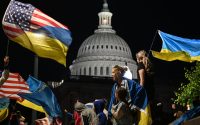Before World Leaders Arrive, San Francisco Races to Clean Up
San Francisco had the air this week of teenagers frantically cleaning up after a house party with their parents on the way home.
On Market Street, the city’s main thoroughfare, maintenance workers resurfaced uneven sidewalks and installed plywood over empty tree wells.
Nearby, a crew gave a long-derelict plaza a makeover by turning it into a skateboard park and outdoor cafe with pingpong tables, chess boards and scores of potted plants. Elsewhere, workers painted decorative crosswalks and new murals, wiped away graffiti, picked up piles of trash and removed scaffolding to show off a refurbished clock tower at the Ferry Building.
Not since the United Nations Charter was signed here in 1945 has San Francisco hosted as large a gathering of world leaders as the one convening over the next week. The Asia-Pacific Economic Cooperation conference, beginning on Saturday, is expected to draw 21 world leaders from Pacific Rim countries — including President Biden and President Xi Jinping of China. As many as 30,000 people are expected to attend.
The conference comes at a pivotal moment for San Francisco, which has struggled to rebound from the pandemic closures that scrambled downtowns across the country. The exodus of tech commuters hammered the city harder than most, leaving retailers bereft of customers, while scenes of homelessness, drug use and petty crime became more visible.
Local leaders hope the APEC conference will be just the catalyst that San Francisco needs to shake off its pandemic doldrums. At the very least, the past few weeks have shown that the city can clean up well.
“This is a huge opportunity, and we’ve been planning this down to the gnat’s eyebrow,” said Aaron Peskin, the president of the San Francisco Board of Supervisors.
Mr. Peskin turned to history for hope that the APEC conference could reverse the city’s beleaguered image, one that many residents say has been unfairly overblown. He said the 1915 Panama-Pacific International Exposition, a World’s Fair along the northern waterfront, signaled the city’s recovery from the destructive 1906 earthquake and fire. It drew more than 18 million people and featured a transcontinental telephone call to New York.
More than a century later, the city has become the locus of artificial intelligence development, but it has a long way to go to restore its boomtown image. Its latest makeover has relied on beautification efforts and overdue maintenance, along with heavier police enforcement in downtown neighborhoods.
Brooke Jenkins, who was appointed as district attorney last year after voters ousted her predecessor over frustrations with crime, said that law enforcement had more authority during the conference to clear people out of designated zones. Those areas include a swath surrounding Moscone Center, where the meetings will take place, and around the Fairmont Hotel atop Nob Hill, where President Biden will stay.
Perhaps the most obvious change has been seen at the Speaker Nancy Pelosi Federal Building at the corner of Seventh and Mission Streets, less than a mile from the conference center.
For two years, a stubborn fentanyl market at the corner and a sprawling homeless encampment across the street became neighborhood fixtures. People regularly used drugs in an adjacent alley.
Most have seemingly disappeared in a poof.
“Come on! Pack it up,” a security guard repeatedly told a few stragglers on Monday who were hunched over scraps of foil, which have become common drug paraphernalia.
Kirsten Thomas, 30, sat at the corner in a wheelchair stroking her dog, Billy. She has been living on the streets since leaving Utah with her boyfriend and described themselves as “travelers” exploring the West Coast.
She said that guards and police officers had told her to move along more often than usual during the day, but that she had a bed at a nearby homeless shelter at night. The city is adding more than 300 beds to its shelter system this month, and is expected to keep them in place once the conference ends.
“The president is coming. They want nicer looking streets,” Ms. Thomas said with a shrug.
Some residents have wondered why San Francisco has been able to fix its notorious problems for the president, but not for them.
A few blocks south of where Ms. Thomas sat, Adam Mesnick, owner of the Deli Board sandwich shop, ordered extra corned beef, pastrami and bacon because he feared delivery trucks wouldn’t be able to reach him during the traffic snarls expected during the conference.
Mr. Mesnick has been a longtime critic of City Hall for not solving San Francisco’s drug and homelessness problems.
“If the city is able to create an illusion that it’s clean and runs effectively and humans are in shelters, even if it’s just for APEC, why is that not sustainable for the longer term?” he asked.
Since the start of 2020, more than 2,600 people have died of drug overdoses in San Francisco, most involving fentanyl — more than from Covid, homicides and car crashes combined — according to the city’s chief medical examiner. Four months ago, Ms. Jenkins’s prosecutors began working with state and federal agencies on a new initiative called “All Hands on Deck” to arrest fentanyl dealers and clear open-air drug markets.
In that time, the U.S. Attorney’s Office for the Northern District of California over the past four months has accelerated federal cases against 30 drug-related defendants, resulting in sentences handed down in less than a month, on average, after arrest, officials announced last week. Ms. Jenkins said she had been assured that the state and federal help would continue after APEC was over.
“We can’t leave San Franciscans feeling as though things get cleaned up for other people and not for them,” she said.
Jennifer Friedenbach, executive director of the Coalition on Homelessness, worried that the city was focusing only on convenience. She said that police officers and outreach workers had prioritized shelter beds for homeless people in the conference zone rather than for the sickest, most destitute or those who had waited for beds the longest.
“It’s a very surface-level cleanup where they’re just trying to hide the presence of homeless people rather than addressing the issue,” she said.
APEC is expected to give a $52.8 million jolt to the struggling local economy, and visitors have booked a combined 55,000 hotel nights, according to the city and the San Francisco Travel Association. The conference could also bring chaos. Thousands of protesters are expected to gather, and traffic will surely be jammed.
At Mayor London Breed’s City Hall office — where her desk has a gold plaque reading, “What Would Beyoncé Do?” — she said in an interview that she felt San Francisco had been unfairly maligned by media reports and social media posts. Despite voter dissatisfaction in polls, she said life in the city had been “looking up.”
This week, San Francisco was awarded the N.B.A. All-Star Game in 2025, and Marc Benioff, the chief executive of Salesforce, announced that the Dreamforce conference hosted by the company would return next year, despite threatening earlier to move the annual tech extravaganza elsewhere.
“This is what we do well as a city,” Ms. Breed said of big events. “We really rise to the occasion to meet the need of the time in such an extraordinary way.”
A Ferris wheel has been moved from Golden Gate Park to the Fisherman’s Wharf tourist hub along the bay, and the art nonprofit Illuminate will shine pastel-colored lasers for miles down Market Street throughout the conference. Parties will abound, including “GAYPEC,” which will be hosted by the mayor and gay political leaders and feature drag queens.
In late September, an international delegation scouted the city to gain insights for their country’s leaders before the conference and chatted with Ms. Breed at “Dear San Francisco,” a show that included acrobats, dancing and original music. She added that the delegation told her the city’s street problems weren’t as bad as they had feared.
She’s just hoping they take that message home with them next week.


